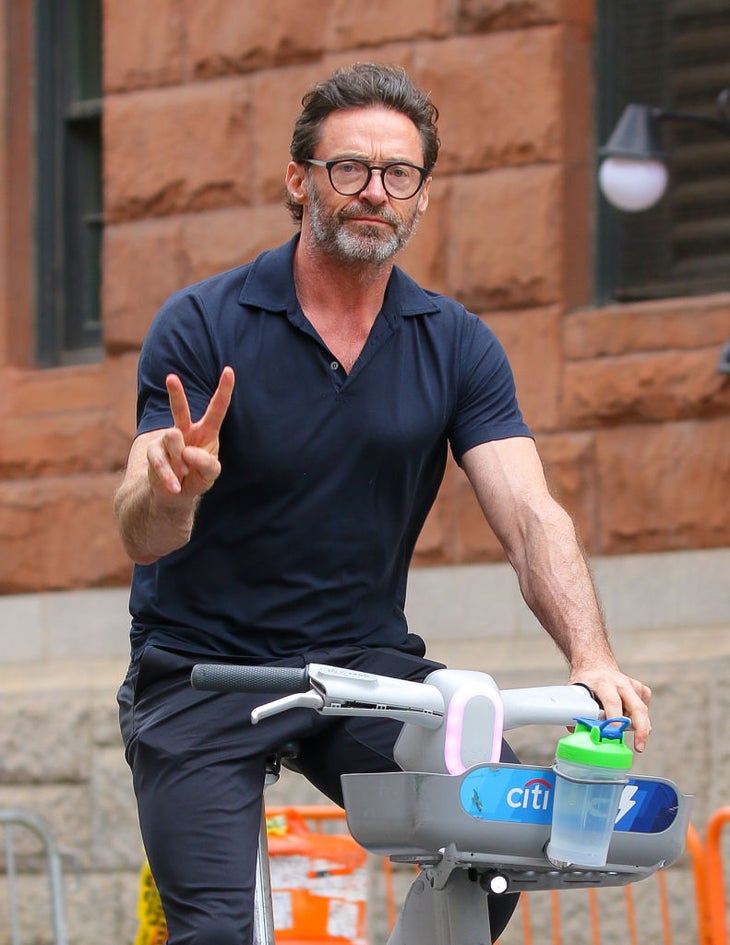Here’s a fun challenge: find your local bike share program and take a look at how much it costs. Some bike share systems offer a flat fee for every time you use them. But most of the time, unless you’re paying for a subscription, you’re going to be surprised by just how much a trip on bike share costs.
A recent report from the National Association of City Transportation Officials (NACTO) revealed that people in the U.S. and Canada took a combined 157 million rides on bike share and electric scooters. That number is an 18 percent increase overall with both nations, but a massive 40 percent increase year over year overall in Canada. And before you wonder about pre-2020 numbers, that 157 million eclipses the 147 million trips taken in 2019.
Let’s go back to that surprising cost. A city like Philadelphia, Pennsylvania might charge $13.50 for 30 minutes on an e-bike, but that same trip can cost $2.00 on public transit. The same goes for Chicago, Illinois, where a 30-minute e-bike trip can cost $14 but a trip on public transit is just $3 comparatively.
Why is it that most bike share is so expensive? And better still, why are more bike share rides than ever? Let’s dig in.
More people are riding bike and scooter share than ever

More people are riding bikes and scooters than ever. Here’s a quick rundown of the numbers.
- 157 million trips were taken in 2023 across the U.S. and Canada, an increase of 18 over 2024.
- E-bike trips accounted for 46 percent of all docked bike share systems in the U.S., though e-bikes accounted for about 1/3rd of the country’s bike share fleet.
- 15 million trips were taken on standard pedal bikes in 2023, a 40 percent increase from 2022.
- While the number of e-bikes in the docked bike share fleets grew by 60 percent, trips on those e-bikes only increased by 13 percent.
- Dockless e-bikes make up 10 percent of the bike share system, but just 4 percent of overall trips on bike share.
- The average dock bike share trip is roughly 30 to 35 minutes, while the average dockless bike share trip is 11 to 12 minutes.
More people are riding bike share than ever. That’s good! Reports show that bike share users tend to attract a relatively diverse group of users. Men might still be overrepresented in the group, but but other groups have shown to be fairly representative of the overall population. That mean’s there’s still lots of work to be done to achieve gender parity, but the people riding bike share tends to be more than the die-hard cyclist.
Another recent study revealed that the demographics most likely to use bike share are often low-income, people of color, and non-auto owners. In contrast, folks living in areas with strong bike cultures and with lots of bike infrastructure tend to only use bike share for commuting and not much else, and they’re less likely to use bike share in general.
You’d think that means an increase in the number of e-bikes in a fleet would bring in more bike share users, then, right? Well yes and no. E-bike trip share has only increased by 13 percent year over year, a small increase compared to the overall percentage growth of bike share fleets being e-bikes. Nonetheless, e-bikes have largely driven growth in U.S. systems, showing that it is not enough to simply get rid of e-bikes and call it a day.
Costs have risen dramatically, too. But why?
Bike share costs have increased almost across the board over the course of the last few years. Lyft, the main operator of Citi Bike in New York City, raised e-bike prices by 20 percent. That also happened to be the second price increase this year. The result is a price of $4.79 per ride for a standard bike, or $4.79 plus 36 cents per minute for an e-bike. That means a 15-minute ride on an e-bike costs $10.19.
In Los Angeles, CA, the Metro Bike share system has seen its per-minute e-bike costs are a bit better. A single 30-minute pass costs $1.75 for 30 minutes, while an e-bike costs that same $2.75. A 15-minute ride on an e-bike costs $2.75 for a non-member, a flat fee.
The NACTO study follows this up, revealing that a typical 30-minute docked bike share trip costs $3.85, while a one-way 30-minute e-bike trip can cost $7.00 or more. Both are more expensive than the average one-way bus ticket.
The difference between Citi Bike and Bay Wheels? Of course, the operators are different. Lyft operates Citi Bike, while the independent group Bike Transit is the operator for Metro Bike. But the big difference? Citi Bike receives no public funding, while Metro Bike is owned by LA Metro, Los Angeles County’s transportation authority.
That’s not the only reason why the cost of bike share systems have increased, of course. The NACTO numbers reveal that e-bike fleets have increased dramatically. Citi Bike plans to supplement its e-bikes with a docking system hard-wired into the power grid, allowing the bikes to charge every time they’re placed on a dock. While implementation has been delayed, building that infrastructure takes money. There’s also increased costs around battery swapping and insurance associated with e-bikes.
There are more e-bikes in bike share fleets than ever, but they haven’t always resulted in more bike trips.
Despite the increase in the number of e-bikes in fleets, not every system has seen growth proportional to the number of e-bikes added. Citi Bike increased its fleet of e-bikes from 20 percent to 25 percent, and e-bike trip trips increased by 50 percent as a result. On the other hand, E-bike utilization in Los Angeles by percentage was roughly similar to that of Washington, DC, despite its Capital Bikeshare system having 44 percent more e-bikes available.
And then there’s the dockless bike share conundrum. Dockless bikes are almost always charged by the minute, and they’re rarely subsidized by local governments. Dockless bike trips are far shorter than docked bike share trips–12 minutes vs 35 minutes–indicating that they could be less expensive. That hasn’t been the case.
The NACTO study shows that the average cost of a dockless e-bike share trip was $6.00 in 2023. A 15-minute trip in Arizona costs $11, while a 6-minute trip in Raleigh, North Carolina can cost as much as $9.00. This is a consistent story across the U.S., where dockless e-bikes are consistently more expensive than public transit. Those dockless e-bikes are also more likely to be stolen or vandalized, increasing costs.
In short, bike share costs have increased due to rising operating costs associated with e-bikes, an increased percentage of trips on dockless bike share systems, and a lack of public subsidy. Add in vandalism and theft, and prices will continue to be higher than you’d hope.
Is there a solution?

Yes, but it’s complicated.
Take a look at one of the most successful bike share systems in North America, Bixi. The Montreal, Quebec-based Bixi has more trips by bike share than any other system other than Citi Bike. with 12 million total trips in 2023. Bixi users used e-bikes more frequently, but it was much more at parity with pedal bikes than any other city in North America. You could attribute those high usership rates to lower costs, but $1.35 CAD plus 20 cents per minute (or 35 cents per minute) isn’t all that inexpensive.
Really, its effectiveness comes from great location placement. Alongside Citi Bike, Bixi was the busiest bike share in North America, with each bike in the system taken out between 6 to 8 times per day. Further, its users say they’re likely to find one of 865 docks across the city exactly where they need it thanks to consistent investment from the city of Montreal’s investment in the program. Pair that with good, connective bike infrastructure in the city, and it makes sense to use a Bixi bike.
My take? Bike share is at its best when it is inexpensive to use and its docks are placed where people want to go. Folks who don’t have any choice but to use bike share will use it regardless of whether or not there are e-bikes. But does that mean bike share systems should drop e-bikes? Absolutely not.
I’ve mentioned this before, but it’s time to treat bike share systems like the public good that some already are, and many more can become. The best bike share systems don’t replace public transit, but they can supplement existing systems with a lower overall operating cost.
E-bikes matter, and there should absolutely be more and more e-bikes in bike share systems. They’re fast, efficient, and more likely to convert someone into a long-term cyclist than not. What they aren’t, however, is a silver bullet.
Want to make the cost of bike share less expensive? Make it something people can use regularly through good dock placement and well-serviced bikes. Optimize dock placement to ensure each bike is used more often per day. E-bikes are good, but reliability is better. If you’re looking at frequently using your local bike share system, investing in a monthly membership will save you money.
Oh, and throw some public investment for good measure. It is a public good, after all.
Welcome to the Urbanist Update. My job here might be as a tech editor, but I’ve also spent tons of time studying transportation, city planning, and engineering. Here are some of the things I’ve found interesting over the past week related to biking in cities, cycling infrastructure, and urbanism.
What is urbanism? In short, it is the study of how the inhabitants of an urban area interact with their towns and cities. If you care about building sustainable communities that let you live a happy and healthy life, then this is the spot for you. See previous Updates here.
